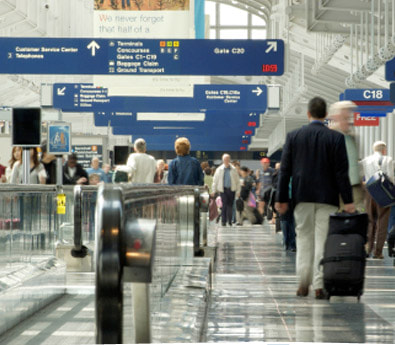|
Destination Information - Honolulu, Hawaii, USA
Exploring the Rich Heritage and Exciting Adventures of Honolulu, Hawaii
Honolulu, the vibrant capital of Hawaii, beckons travellers with its captivating blend of rich history, breathtaking natural beauty, and endless recreational opportunities. Nestled on the island of Oahu, this tropical paradise offers a unique experience that combines the charm of a laid-back island lifestyle with the amenities of a bustling city. Whether you're interested in immersing yourself in the city's history, relaxing on pristine beaches, or embarking on thrilling adventures, Honolulu has something for everyone. Honolulu boasts a fascinating history that dates back centuries. Originally settled by Polynesians, the city's cultural roots run deep. The area gained international prominence in the 19th century when it became a vital port for trade between Asia and North America. Exploring the rich heritage of Honolulu, visitors can delve into the captivating past at landmarks like Iolani Palace, the former royal residence and the only palace on American soil. The Bishop Museum offers a comprehensive collection of Hawaiian artifacts and exhibits that provide valuable insights into the island's indigenous culture. Honolulu is replete with captivating attractions that are bound to leave visitors awe-inspired. No visit is complete without a trip to the iconic Diamond Head State Monument, an ancient volcanic crater offering panoramic views of the city and the sparkling Pacific Ocean. A visit to Pearl Harbor is a poignant journey through history, where travellers can pay their respects at the USS Arizona Memorial and explore the interactive exhibits at the Pearl Harbor Visitor Center. For a taste of local life, a stroll along the lively Waikiki Beach is a must, with its golden sands, vibrant shops, and delectable dining options. Nature enthusiasts will find themselves in awe of Honolulu's breathtaking landscapes. Embark on a thrilling hike through the lush rainforests of Manoa Falls, where the cascading waterfall serves as a majestic reward for your efforts. Immerse yourself in tranquility at the Hanauma Bay Nature Preserve, a marine conservation area teeming with vibrant coral reefs and a kaleidoscope of tropical fish. If you're feeling adventurous, hit the waves and try your hand at surfing, a popular activity in the birthplace of the sport. Honolulu's diverse culture is showcased through its lively festivals, vibrant arts scene, and mouthwatering cuisine. Take part in the Aloha Festivals, a series of events celebrating Hawaiian culture, featuring hula performances, traditional music, and vibrant parades. Explore the charming neighbourhood of Chinatown, where you can browse eclectic shops, sample exotic street food, and appreciate the local art scene. Don't miss out on indulging in a traditional luau, where you can savor delicious Hawaiian delicacies while enjoying captivating Polynesian music and dance performances. Tips for Travellers:
Honolulu, with its rich history, breathtaking landscapes, and vibrant culture, offers travellers an unforgettable experience. From exploring its captivating past to indulging in thrilling outdoor adventures, this tropical paradise has something to suit every taste. Whether you're seeking relaxation on pristine beaches, immersing yourself in local traditions, or embarking on exciting excursions, Honolulu will leave you with memories that will last a lifetime. So pack your bags, embrace the aloha spirit, and get ready for an unforgettable journey in the heart of Hawaii. |
|

|
|
Discount Airline Tickets | Flights | Airports | Privacy Policy | About Us | Contact Us
FlyForLess.ca is an affiliate of Aviasales/JetRadar, a leading flight search engine that allows users
to compare airfares from over 700 airlines and travel agencies in order to find the cheapest flight tickets.
We offer discount airline tickets with a database of over 2 million international airfares, as well as car rentals, hotels, and vacation packages
with departures from cities across Canada. Book your cheap flights, discount car rentals, and special hotel rates with FlyForLess.ca
©2023 FlyForLess.ca. All rights reserved
FlyForLess.ca is an affiliate of Aviasales/JetRadar, a leading flight search engine that allows users
to compare airfares from over 700 airlines and travel agencies in order to find the cheapest flight tickets.
We offer discount airline tickets with a database of over 2 million international airfares, as well as car rentals, hotels, and vacation packages
with departures from cities across Canada. Book your cheap flights, discount car rentals, and special hotel rates with FlyForLess.ca
©2023 FlyForLess.ca. All rights reserved
